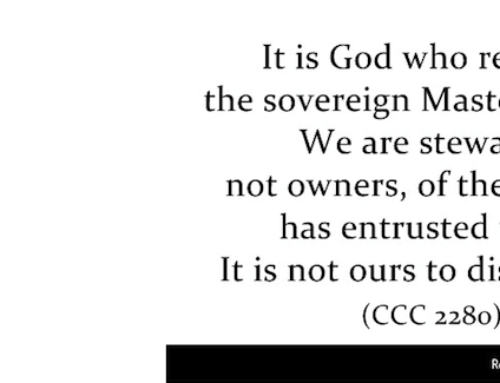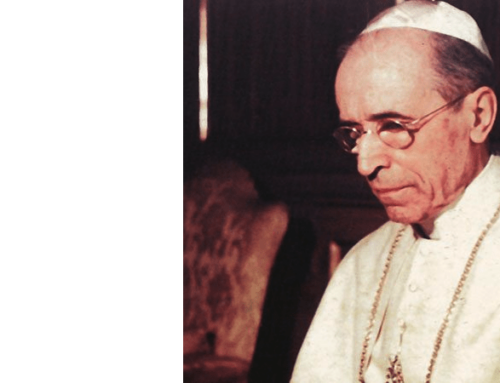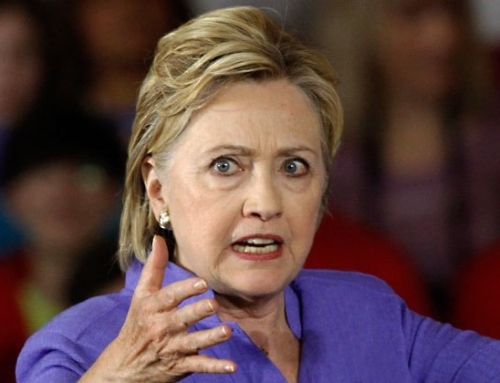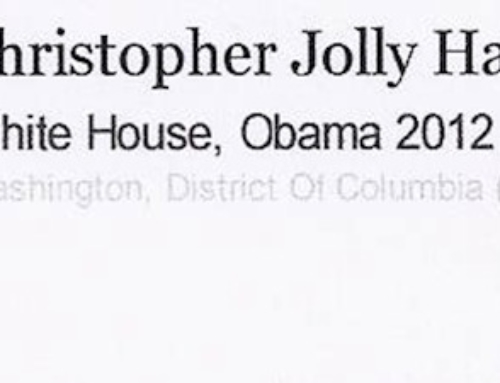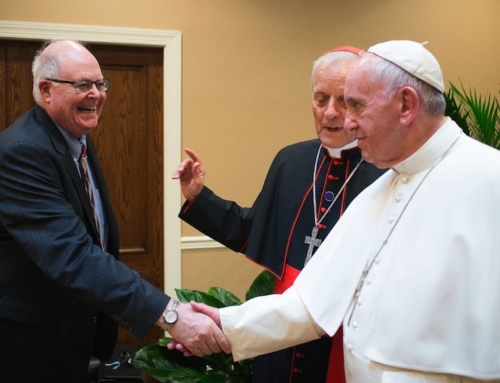by William A. Donohue
(Catalyst 4/1996)
The coming of Spring traditionally signals a new beginning, a time for men and women of good will to examine their lives and work, and to resolve to do better in the future. In that vein, I ask our national news media to consider the job they are doing of covering religion in America. Any honest examination would show that the media’s treatment of religion ranges from indifference to misunderstanding. And where coverage of the Roman Catholic Church is concerned, it is openly hostile.
A recent Gallup survey showed that 95 percent of Americans believe in God; another poll showed that nine out of ten of us pray on a regular basis. Clearly, matters of faith are of great importance to the vast majority of Americans.
Yet, despite their claims that they report the news objectively, our major television networks continue to ignore this important reality. In 1994, the “Big Four” new outlets—ABC, NBC, CBA and CNN—filed some 18,000 news reports among them. Of these, only 225 (barely 1%) dealt with religious institutions, movements, or ideas. Of the approximately 26,000 morning news segments, just 151 (about one half of one percent) touched on the subject of religion. Out of hundreds of hours of network magazine shows and Sunday morning interview broadcasts, only nine segments addressed matters of religious faith. Religion is simply not on the media’s radar screen as a matter of importance in contemporary American life.
When reporters do cover matters of faith, no institution is more frequently reviled than the Roman Catholic Church. During 1994, it drew the most evening news stories (103), and the hostility communicated in these stories was obvious to viewers. When the U.N. Population conference was convened in Cairo to promote worldwide contraception, abortion, and sexual liberties for adolescents, the news media openly attacked the Catholic Church for its justifiable opposition to this agenda. Typical of the media’s disgust was this reports from ABC’s Jim Bitterman: “Vatican representatives at the population conference were today being cast in the role of spoiler, their stubborn style angering fellow delegates…Thousands of activists who came here to push causes from the environment to women’s rights have been ignored as the representatives from 182 nations spend their time and energy on the abortion issue.”
To Mr. Bitterman, sexual morality – including the moral issues involved in marriage, abortion, homosexuality, and promiscuity – is an outdated issue in the modern age, akin to urging the use of chastity belts and hourglass corsets. It was of no consequence to him that the agenda for this important U.N. conference ran counter to the basic teachings of one of the world’s great faiths, developed over nearly two thousand years of its existence. Those teachings may change over time, in the light of human experience and a more perfect understanding of the Divine Will, but they are not teachings that can be put on the bargaining table at an international meeting to reach a happy consensus among this year’s assortment of conference goers.
The national news media delight in portraying the Catholic Church as an intolerant and anachronistic institution, out of touch with the times. On such issues as celibacy and the priesthood, or women in the priesthood, or premarital sex, or homosexuality, the teachings of the Church will rarely get a fair shake. The media seems to think that the teachings of the Church are arrived at through bargaining and negotiation among self-appointed interest groups. They are not, and it is inexcusable that so many journalists fail to grasp such a fundamental point.
It is easier, and apparently far more satisfying, for the media simply to dismiss the Church’s teachings, along with Pope John Paul II. “There are 60 million Catholics in America,” explained the Washington Post writer Henry Allen, “and for many of them the Pope also speaks with the voice of a conservative crank when he stonewalls on abortion, married priests, women priests, and so on.” Never mind that for the vast majority of Catholics here and around the world, the Pope is an inspired religious leader who does not “stonewall” on any of these issues, but rather upholds the traditional teachings of the Church.
But when the “conservative crank” is thought to be promoting liberal causes, my how the coverage changes! Last Fall the Pope visited the United States in the midst of a rancorous debate over the federal budget. When the Pope spoke about our obligation to help the needy, many in the press found a closet endorsement of Bill Clinton and the Democratic party. “The Pope seemed to admonish the supporters of proposed laws to restrict immigration and dismantle many of the nation’s programs for the poor,” intoned New York Times Reporter Robert McFadden, “in doing so, he appeared to echo many of President Clinton’s warnings.” Timothy McNulty of the Chicago Tribunesaw it the same way: “At times the Pope even sounded like a Democrat. His heart is with the have-nots. And for that, at least, liberals appreciate his views on peace and social justice.”
And yet, during more than a dozen speeches during his visit, the Pope never endorsed Clinton’s position on any of these issues. The Pope, like his predecessors, has spoken frequently over the years about our obligations to the poor, but he has never said that these need to be carried out through government programs of the kind promoted by liberals. Indeed, in the Pope’s recent encyclical, Centesimus Annus (1991), he criticized the welfare state for encouraging dependence and discouraging work on the part of the poor. Instead of relying on bureaucratic programs sponsored by central governments, the Pope called on us to help the poor in more personal and neighborly ways in order to strengthen families and local institutions.
The Pope’s position, and that of the Catholic Church over the centuries, is hardly the simplistic doctrine attributed to him by the reporters quoted above. It should not be all that difficult for journalists to give an honest and factual account of the Church’s position on a subject like this or, indeed, to consult the documents of the Church before rendering an opinion about it.
The most important moral issue facing the Catholic Church is the plague of abortion. In the last two decades, some 30 million unborn babies have died. Thirty million souls who will never have the chance to love or laugh and cry, who will never have the chance to grow up and become doctors and musicians and architects and loving parents and bless our country in many and magnificent ways.
In 1994, there were a total of 247 network news stories that touched on this vital moral issue, but very few presented the pro-life position in an objective or fair-minded way. The violence of abortion, the moral anguish it produces, adoption and other alternatives to abortion – these aspects of the issue were all but ignored by the national news media.
What, then, was the focus of the news coverage? Fully two out of three of these networks stories dealt, not with the abortion issue itself, but rather with the different subject of pro-life violence against “abortion rights advocates.” The insinuations in many of these stories were downright insulting to those who support the pro-life position. When Dr. David Gunn was murdered, CBS anchor Bob Schieffer reported that, “We’ve all noticed that there has been a link between crime and religion.” ABC’s Linda Pattillo was even more vitriolic, labeling the pro-life movement “an organized campaign of domestic terrorism.”
To be sure, violence at abortion clinics was an important story deserving of coverage, though it was manifestly unfair for reporters to suggest that such violence is condoned or encouraged by the pro-life movement. When pro-life activists or the Catholic Church itself are attacked, however the national media conveniently look the other way. In 1994, for example, there were numerous documented cases of violence aimed at right-to-life activists, including the shooting of one such activist in Louisiana. Only CNN covered the story.
A few years ago, a group of protesters invaded St. Patrick’s Cathedral in New York City, and disrupted a mass that was being conducted by John Cardinal O’Connor. These “activists” blocked the aisles and prevented worshippers from receiving Holy Communion as a protest against the Church’s teaching on homosexuality. The mainstream news media sympathized with the protesters, and thus did not bother to condemn this naked act of religious bigotry. All of his simply underscores an ugly but inescapable reality in America today: prejudice is still condoned as part of our national conversation, as long as it is being directed against the Catholic Church.
How does one explain this ignorance on the subject of religion? William Cardinal Keeler has observed that on any given Sunday there are more people attending church services than all national sports events combined, and yet, while all networks have sports divisions, none has a religion division and only one has an official religion reporter. Several years ago, Professor Robert Lichter conducted a survey of the national news media and found that 50 percent of journalists do not believe in God, 86 percent seldom or never attend religious services, and only 2 percent are practicing Catholics. Ninety percent support abortion, 76 percent believe that adultery is permissible. Their hostility toward principles of the Catholic faith is not a reflection of public opinion but of their own beliefs.
The national news media need to come to terms with their ignorance of, and contempt for, matters of religious faith in general and of the Catholic Church in particular. Until they do, they make a mockery of the term “objectivity.”


